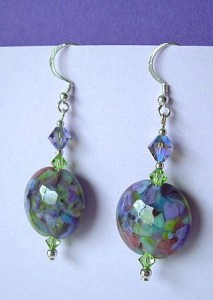 So, your friends and family have been raving about the jewelry you make, and urging you to try your hand at selling it? Receiving such enthusiastic encouragement can be truly exciting, but you may be a little nervous about entering the retail market.
So, your friends and family have been raving about the jewelry you make, and urging you to try your hand at selling it? Receiving such enthusiastic encouragement can be truly exciting, but you may be a little nervous about entering the retail market.
One way to stick a toe in the water is with consignment. Although there are a few precautions to take, consignment can be an excellent way for you to start small and “test the market”.
Shop owners are always searching for unique, high quality, items to stock their stores, but because of cash flow, they are not always willing to take a chance on buying merchandise with no track record. This is where consignment comes into play, and it can be mutually beneficial for you and the shop owner.
For you, it’s a relatively inexpensive way to place a few of your designs out in the marketplace to see which ones have selling power. You can then focus on creating those particular items, and thus be better able to plan your budget when purchasing supplies. You’ll also gain experience in judging how much of your time you want to devote to your craft. If time-consuming pieces begin to sell quickly, you may decide to concentrate on smaller items that also sell well, but are quicker to create.
Before you enter into any agreement to leave your items on consignment, be sure to consider the following:
Choose an attractive, well-maintained, store where the inventory is of high quality. This will help ensure that your items will be cared for while they are on display.
Be absolutely certain to have a contract where all terms of your agreement with the shop are in writing!
This written agreement should cover:
Percentage that the shop will keep when your items sell.
Length of time your items will be displayed and given the chance to sell.
Who is liable if items are stolen or damaged while on display. (Most shops will stipulate that you are leaving items at your own risk, so as mentioned above – choose the shop carefully!)
How you will be paid when your items sell and how often payments will be made. (Many shops send one check per month for any sales in the previous month.
You may also want a clause that states that you have the right to remove your items earlier than the agreed upon time frame, if you feel that they are not being cared for properly.
Consignment is serious business. It requires that you ask lots of questions, get things in writing, and make good choices about where you place your treasures. But, with a little luck, your items will be selling soon, and the shop owner will be asking for more
You’ll be in business . . . your friends will be delighted 🙂

I have been thinking of trying to sell some of my papercraft creations in a consignment, so this post is extremely helpful
thanks for sharing
A new store opened up in our town and we’ve started to do some consignment. Not much success at this point, but we at least are cleaning out our closets.
good intro post
I work with two consignment shops. When an item is sold, I can choose to get money back or I can leave it in the account. Then if I buy from the consignment shop, it is subtracted from my money in the account. I love working with these shops.
I’ve never tried consignment selling, but these are very good tips, sweetie! … Stay cool, it’s going to be a hot one! xoxo Paulette 😉